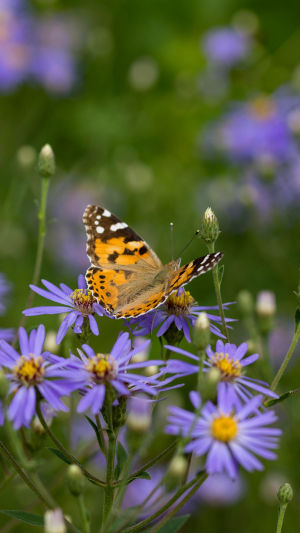Hello, Lykkers! Today, we want to take you on a journey into the beautiful world of butterflies. These colorful insects are more than just garden decorations—they play important roles in nature.
Let's explore their life habits together and see what makes them so special from five key perspectives.
<h3>The Butterfly Life Cycle</h3>
We start with the butterfly's life cycle, which has four stages: egg, larva (caterpillar), pupa (chrysalis), and adult. Each stage is unique and essential for their development.
- Egg Stage: Female butterflies lay eggs on specific plants that their caterpillars will later eat. The egg stage lasts from a few days to several weeks depending on species and conditions.
- Larva Stage: When eggs hatch, tiny caterpillars emerge. Their main job is eating—they munch on leaves constantly to store energy for growth. They shed their skin many times as they grow larger.
- Pupa Stage: The mature caterpillar finds a safe spot to transform into a pupa. Inside the chrysalis, it changes completely, reorganizing its body to become a butterfly. This stage can last weeks or months.
- Adult Stage: The butterfly finally emerges, ready to fly and reproduce. Its main focus now is to find mates and lay eggs, continuing the life cycle.
This full journey shows how life is a mix of change, challenge, and resilience.
<h3>What Butterflies Eat</h3>
Butterflies' diets vary a lot between stages. Understanding their food helps us appreciate how they survive and grow.
- Caterpillars: These little eaters focus on plant leaves, often only from certain species. Their appetite is huge because they need lots of energy to prepare for transformation.
- Adult Butterflies: Adults sip nectar from flowers through a long straw-like mouthpart. Nectar provides energy and helps them stay active. Some also feed on rotting fruit, tree sap, or even liquids from animal droppings to get extra nutrients.
Butterflies pick their food based on their needs and what's around, showing smart adaptation in nature.
<h3>Where Butterflies Live</h3>
Butterflies choose habitats carefully, needing the right temperature, humidity, and food sources.
- Forests: Many butterflies thrive in forests, especially tropical rainforests. These places offer lots of plants for caterpillars and plenty of flowers for adults.
- Meadows and Gardens: Open fields and gardens with flowers attract butterflies for feeding and laying eggs. Planting butterfly-friendly flowers can invite more of them to visit.
- Wetlands and Riverbanks: These humid spots with dense plants also suit certain butterfly species well.
We see that butterflies pick homes full of life, where nature is rich and inviting.
<h3>Butterfly Behavior: How They Live and Survive</h3>
Butterflies show interesting behaviors in feeding, mating, and migrating.
- Finding Food: They rely on their vision and smell to find colorful flowers, especially red, yellow, and purple ones. Their antennae help them sense nectar's scent.
- Mating: Male butterflies impress females with wing displays and flight dances. After mating, females search for the perfect leaves to lay eggs.
- Migration: Some species, like monarch butterflies, travel thousands of miles yearly to find better climates. This long journey helps the population survive through tough seasons.
These behaviors reflect butterflies' persistence and their ability to adjust to the world around them.
<h3>The Role Butterflies Play in Nature</h3>
Butterflies are not just pretty; they are vital to the environment.
- Pollination: When feeding on nectar, they transfer pollen between flowers, helping plants reproduce and keep ecosystems healthy.
- Food Chain: Butterflies and their larvae feed many birds, bats, and insects. They are an important link, passing energy through nature's food web.
- Environmental Indicators: Because butterflies are sensitive to changes, their numbers and health tell scientists about the state of the environment.
In quiet ways, butterflies help keep our natural world balanced and thriving.
<h3>How We Can Help Protect Butterflies</h3>
Seeing how delicate yet important butterflies are, we can do some simple things to help them:
- Protect Habitats: Forests, wetlands, and meadows need our care to provide safe homes for butterflies.
- Cut Down on Pesticides: Chemicals harm butterflies and their young. Choosing organic farming and natural pest control protects them.
- Plant Nectar Sources: Growing plants like coneflowers, vervain, and thyme in gardens encourages butterflies to come and stay.
Every small action adds up, making a big difference for these beautiful creatures.
<h3>Join Us in Appreciating and Protecting Butterflies</h3>
We hope this look into butterfly life habits helps you see them in a new light. They teach us about change, survival, and the beauty of nature's cycles. Let's all work together to protect their homes and keep our world colorful and full of life.
Feel free to share your own butterfly stories or tips in the comments below! Thanks for reading, and we’ll see you next time!
Hatch and Raise Monarch Butterflies - complete how to guide with detailed and beautiful video!
Video by Ellsey Kay Gardens





